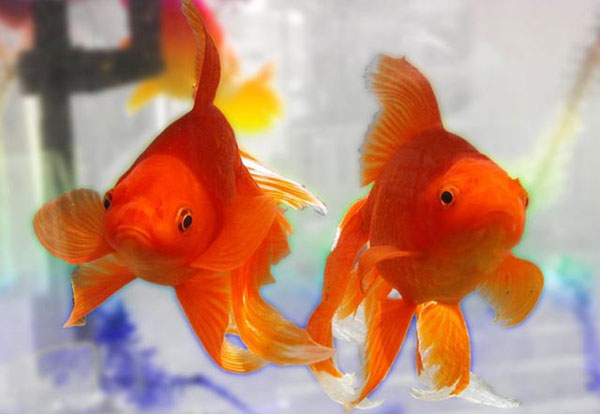Saltwater fish can live in fresh water?
Some fish can live in both saltwater and fresh water. They are collectively referred to as salted fish (euryhaline fish). However, most fish can only live in one of two environments (saltwater or freshwater), depending on the salt tolerance of the body.
According to the NBII biology classification table of the US, the group of large salted fish are highly adaptable species. They can migrate back and forth between saltwater such as sea and freshwater such as certain ponds, lakes and rivers.

Goldfish can only survive in fresh water.
The wide salt fish group is divided into 2 main types: river upstream (sea fish) and migration to the sea to breed (river fish). The first type is fish that are born in fresh water but spend most of their lives at sea and only return to fresh water to breed. This category includes salmon, herring, sturgeon, mezzanine and bass.
In contrast, the second type usually lives in freshwater areas and migrates only to saline water to give birth. The North American eel species belongs to this subgroup, according to the US Department of Seafood and Fisheries.
Unlike large salt fish groups, most fishes can only tolerate small fluctuations in salinity and are extremely sensitive to any changes in salt concentrations in their habitats. These species are collectively referred to as stenohaline fish. Goldfish belong to this group and can only live in freshwater environments. In contrast, tuna - also a member of a narrow salt group, can only survive in saltwater.
In fact, freshwater fish will often not be able to survive if the salt concentration in the habitat increases by more than 0.05%, according to the NBII table.
When migrating, even fish species in the broad salt group need time for the body to adapt to different salt concentrations compared to their familiar habitat. By combining salt concentrations of habitats with each of their different life stages, salted fish can balance the desired concentration in their bodies with the surrounding environment.
- Can saltwater fish survive in fresh water?
- Salt water can generate 1,000 times more electricity than a solar battery
- Marvel at fish that can live 6 days on land
- Strange fish can live on land all year without dying
- Can fish or fresh fish be better?
- Frozen frozen fish revived after two seconds into the basin
- Grade 11 students and equipment to turn saltwater into sweet
- How to identify poisonous fish
- Create fresh water with solar energy
- Tips to keep fish fresh for up to 3 days without a refrigerator may not be known
- The factory turns seawater into 75,000 liters of drinking water every day
- Strange fish and frogs live without water
 Animal 'suffering' after hibernation
Animal 'suffering' after hibernation Why do goats climb well?
Why do goats climb well? Scientists were surprised to see chimpanzees eating turtles
Scientists were surprised to see chimpanzees eating turtles Giant catfish died deadly due to drought in Thailand
Giant catfish died deadly due to drought in Thailand Strange species in Southeast Asia becomes the first marine fish species 'extinct due to humans'
Strange species in Southeast Asia becomes the first marine fish species 'extinct due to humans'  What time of day is the easiest to fish?
What time of day is the easiest to fish?  Special uses of a highly poisonous plant that grows throughout Vietnam
Special uses of a highly poisonous plant that grows throughout Vietnam  Why are there so many giant fish flooding the Three Gorges Dam but no one dares to catch them?
Why are there so many giant fish flooding the Three Gorges Dam but no one dares to catch them?  Specialty fish 'vong bat lieu ngu' is more expensive than gold but still sought after
Specialty fish 'vong bat lieu ngu' is more expensive than gold but still sought after  Hundreds of fish jumped out of the lake in China, what happened?
Hundreds of fish jumped out of the lake in China, what happened? 